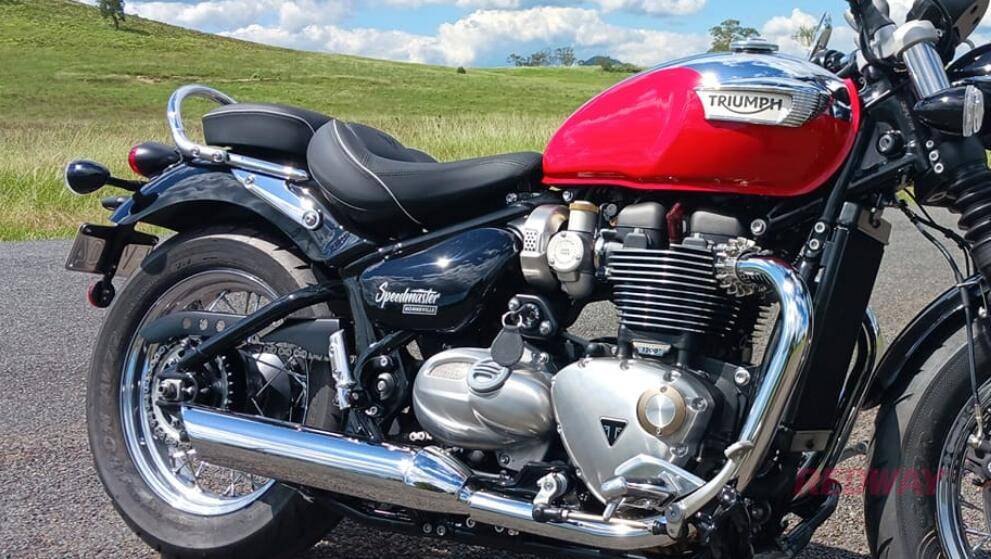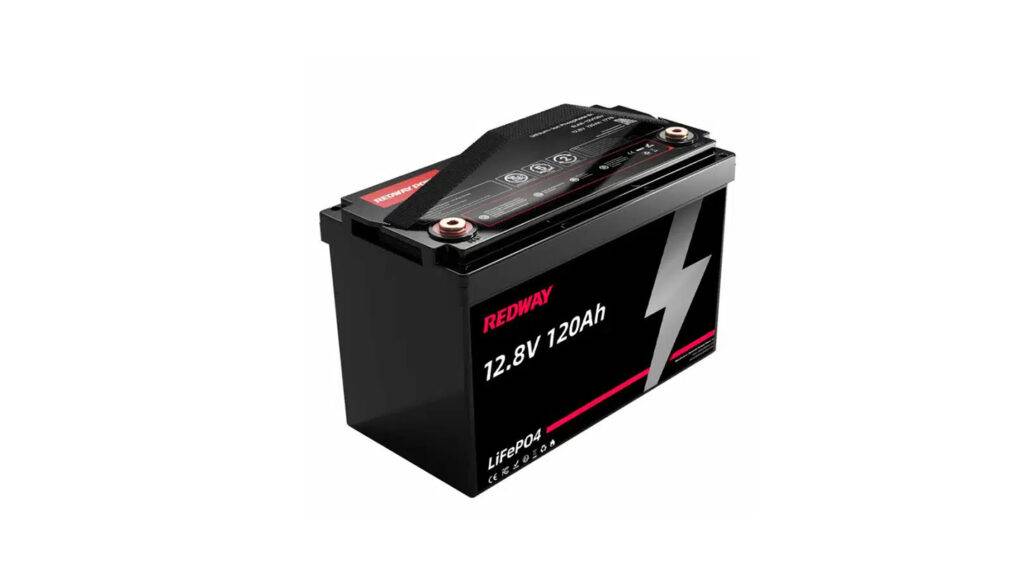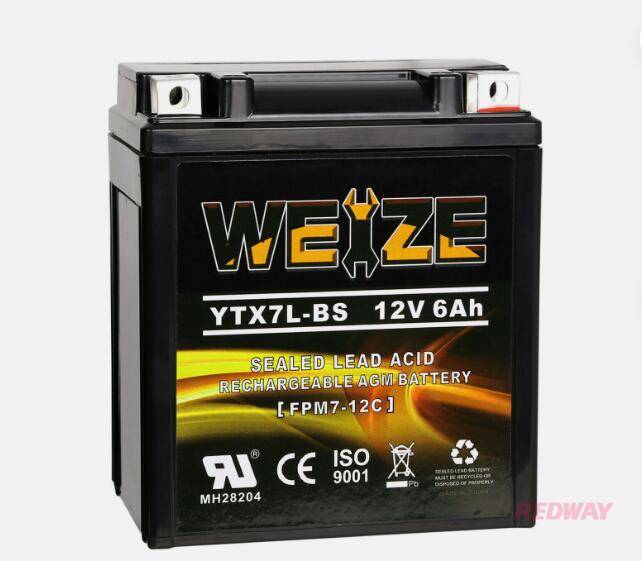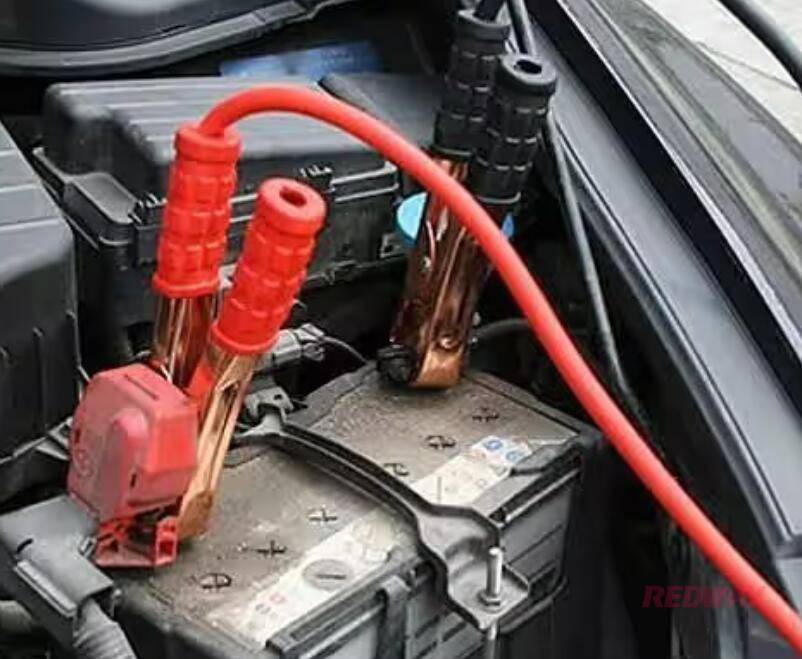Motorcycle batteries are typically maintained by the onboard charging system, but they may occasionally lose their charge. This can be caused by various factors such as hot weather, which increases self-discharge rates, as well as parasite loads from alarms and similar systems.
Additionally, long periods of inactivity, such as during winter, can also contribute to battery discharge. To ensure a longer lifespan for your motorcycle battery and prevent potential problems with starting the engine, it is important to properly recharge it if it becomes semi or fully discharged.

#post_seo_title
Motorcycle Battery Types
Most popular motorcycle batteries are starting/cranking lead-acid wet/flooded and AGM batteries, with the Gel-Cell batteries also being used as well.
Lithium motorcycle drop-in replacement batteries are not as common and are mostly used in high-end and professional applications.
Lead-acid motorcycle batteries are mostly 12V batteries with capacity ranging from 5-6 to 20+ Ah.
Although these batteries are much smaller than larger deep-cycle batteries, since they are designed and optimized for one purpose, to crank gas and diesel engines, these batteries are able to provide very strong currents.

A battery’s charge time depends on its age, Depth of Discharge (DoD%), and capacity.
In general, starting batteries can be safely charged between 0.1C – 0.15C, although some models allow charging between 0.25C – 0.33C.
Whenever charging lead-acid batteries, it is recommended to use an AGM battery charger with modes for wet/flooded, AGM, and Gel-Cell batteries, since all these battery types have very similar, but different charging end voltages.
Temperature compensation is also necessary to prevent under- and overcharging of batteries.
Battery chargers that analyze lead-acid batteries first charge them according to their condition – if necessary, they use desulphation and deep-discharge recovery modes.
As soon as the battery is fully charged, smart AGM battery chargers switch to maintenance mode, keeping the battery fully charged longer.
Using different AGM battery chargers, the following comparison chart shows charging times for fully discharged (100% DoD) motorcycle batteries:
| Battery Capacity | Battery Charger | ||||||
| 0.5A | 0.75A | 1A | 2A | 3A | 4A | 5A | |
| 6Ah | 12-13h | 8-10h | 6-7h | – | – | – | – |
| 8Ah | – | 11-12h | 8-9h | (4-4.5h) | – | – | – |
| 10Ah | – | – | 10-11h | (5-5.5h) | – | – | – |
| 12Ah | – | – | 12-13h | 6-7h | (4-4.5h) | – | – |
| 15Ah | – | – | – | 8-9h | (5-5.5h) | – | – |
| 18Ah | – | – | – | 9-10h | 6-7h | (4.5-5h) | – |
| 20Ah | – | – | – | 10-11h | 6.5-7.5h | (5-5.5h) | – |
| 25Ah | – | – | – | 12-13h | 8.5-9-5h | 6.5-7h | (5-5.5h) |
| 30Ah | – | – | – | – | 10-11h | 7.5-8.5h | 6-7h |
Note: These values are only general estimates and can be affected by factors such as the battery’s condition, depth of discharge (DoD), age, and temperature. Any readings marked with a “-” indicate that the battery is not suitable for use, while values like “(5-5.5h)” suggest that the battery can still be recharged, but the charger may be slightly overpowering. However, to accurately determine the ideal charging current for your specific battery, you may refer to its documentation and identify the maximum allowed charging current.
You should probably consider a 2.0 Amps smart AGM battery charger if you are looking for a good motorcycle lead-acid battery charger.
Lithium motorcycle batteries should only be recharged using lithium battery chargers or smart AGM battery chargers with lithium battery charging modes.
Lithium starting motorcycle batteries may be recharged with currents ranging from 0.2C to 1.0C depending on their design.
For the proper charging current, please refer to the documentation of your battery.
Note: Lithium batteries are charged using the so-called CC/CV (Constant Current/Constant Voltage) algorithm which differs from the lead-acid battery charging algorithm.
The following comparison chart lists charging times of the fully discharged lithium motorcycle batteries using different lithium battery chargers:
| Battery Capacity | Battery Charger | |||||
| 1A | 2A | 3A | 5A | 10A | 15A | |
| 6Ah | 6-7h | 3-3.5h | 2-2.5h | – | – | – |
| 8Ah | 8-9h | 4-4.5h | 2.5-3h | (1.5-2h) | – | – |
| 10Ah | 10-11h | 5-5.5h | 3.5-4h | 2-2.5h | – | – |
| 12Ah | – | 6-6.5h | 4-4.5h | 2.4-3h | – | – |
| 15Ah | – | 7.5-8h | 5-5.5h | 3-3.5h | – | – |
| 18Ah | – | 9-9.5h | 6-6.5h | 3.5-4h | (1.5-2h) | – |
| 20Ah | – | 10-11h | 6.5-7h | 4-4.5h | 2-2.5h | – |
| 25Ah | – | – | 8.5-9h | 5-5.5h | 2.5-3h | (1.5-2h) |
| 30Ah | – | – | 10-11h | 6-6.5h | 3-3.5h | 2-2.5h |
Note: Also, values with “-” or “(1.5-2h)” mean that the battery may be recharged with such current, but perhaps the charger is a bit too strong.
Anyhow, it is highly recommended when charging the lithium batteries to find the battery documentation and check the maximum allowed charging current – lithium batteries are usually protected by an internal Battery Management System (BMS) that does not allow too strong a charge current.
If you are looking for a good motorcycle dedicated lithium battery charger, a 3.0 Amp smart lithium battery charger is probably your best bet, but first check your battery and its maximum charging current.

#post_seo_title
Conclusion
Getting the battery so discharged that it is unable to crank the engine is very difficult if you ride your motorcycle regularly and everything is well with its electric system. You should check the battery type and capacity and get a charger for the battery – in most cases, the battery should still be able to go for a long time.
If, however, the smart battery charger indicates that the battery is bad, perhaps it’s time to get a Powersports Battery and replace it.




